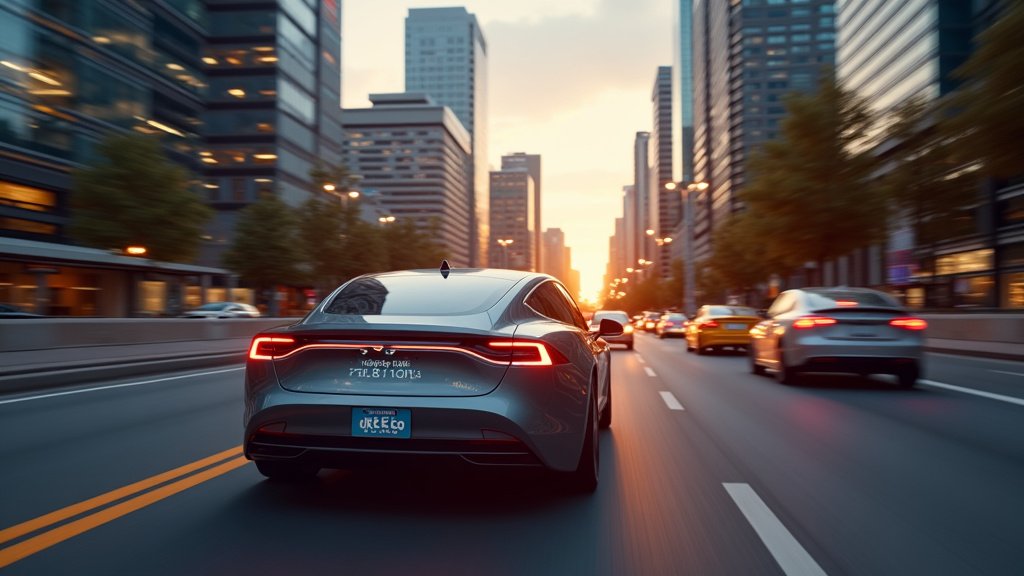The Oregonian’s Editorial Board recently published an editorial that sparks a critical discussion regarding the long-term viability of Oregon’s gas tax. As the automotive landscape shifts toward electric and high-mileage vehicles, the traditional funding mechanism for the state’s transportation infrastructure is increasingly becoming obsolete, prompting state officials to consider alternative solutions.
The Shifting Sands of Transportation Funding
The core issue, as highlighted in the editorial, lies in the evolving nature of vehicle ownership. The gas tax, a long-standing source of revenue for road maintenance and other transportation projects, is predicated on the consumption of gasoline. With the accelerating adoption of electric vehicles (EVs) and the growing popularity of fuel-efficient hybrid models, the revenue generated from this tax is steadily dwindling. This trend presents a significant challenge for maintaining and upgrading Oregon’s roadways and transportation systems.
Governor Tina Kotek has acknowledged the changing dynamics of transportation funding. The governor’s office is exploring options to transition away from the gas tax to secure a more sustainable funding model for transportation infrastructure. A key alternative being considered is the implementation of a road user charge, a system where drivers pay based on the number of miles they travel, regardless of the fuel their vehicle consumes.
Road User Charge: A Potential Replacement
The proposed road user charge represents a fundamental shift in how transportation infrastructure is funded. The editorial indicates that the state government is seriously considering a mandatory road user charge. The rollout of this system is planned in phases. Existing EVs could be subject to the charge as early as July 1, 2027. New EVs would follow on January 1, 2028, and hybrids/plug-in hybrids by July 1, 2028.
This phased approach aims to gradually incorporate various vehicle types into the new system, ensuring a smooth transition and providing ample time for drivers to adapt. The details of how this charge would be implemented and the specific per-mile rate are still under consideration, but the basic concept is clear: those who use the roads contribute to their upkeep, irrespective of the type of vehicle they drive.
The Current Voluntary System and Its Limitations
Oregon is no stranger to the concept of a road user charge. The state currently operates a voluntary system, known as OReGO, where drivers can opt in and pay two cents per mile driven. However, the editorial notes that the participation rate in OReGO is relatively low. This is a significant hurdle as the revenue generated from the voluntary program is insufficient to provide a significant funding source. A low participation rate underlines the need for a more comprehensive and mandatory system to ensure adequate funding for transportation needs.
For drivers currently participating in the OReGO system, the editorial encourages them to share their experiences, which could help inform the state’s decisions regarding the transition to a broader road user charge program. Understanding the benefits and drawbacks of the current voluntary system is critical to developing a successful and equitable mandatory system.
Addressing Funding Needs
The urgency of addressing transportation funding has been further underscored by the scheduling of a special session on August 29. This special session is explicitly intended to address the Oregon Department of Transportation’s (ODOT) operations and maintenance funding. The fact that a special session is required reflects the critical nature of the funding challenges and the need for immediate action.
As the state grapples with the evolving transportation landscape, the editorial underscores the necessity of adapting to the changing times. The shift from the gas tax to a road user charge, although a significant change, reflects the need for a more sustainable and equitable way to fund Oregon’s crucial transportation infrastructure. The success of this transition will depend on careful planning, public engagement, and the development of a system that fairly reflects the usage of state roadways.




